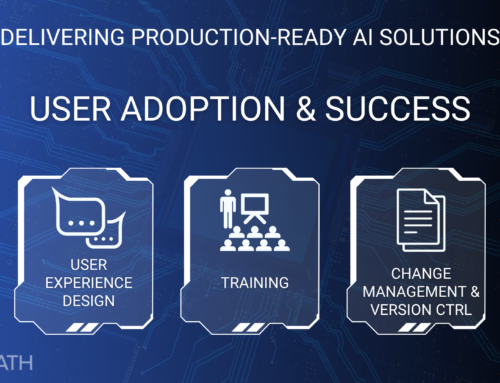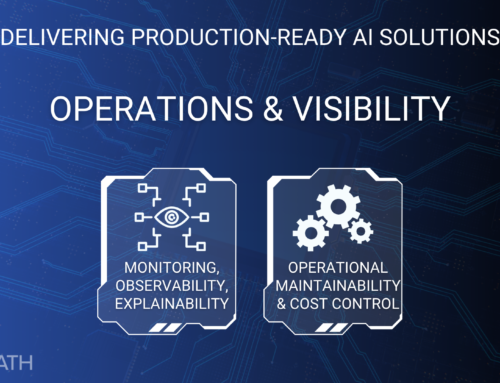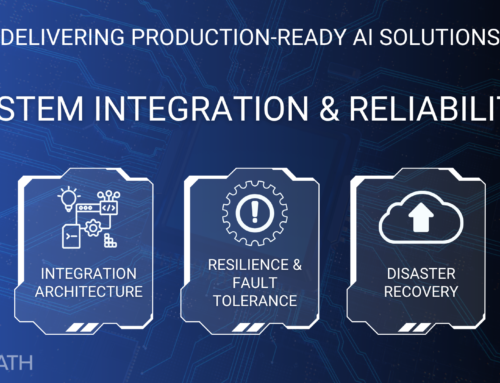As enterprises step into 2025, the promise of artificial intelligence (AI) has never been louder. Boards schedule strategic sessions, vendors underscore "agentic" and "transformative" potential, and investment in models, data and tooling continues to accelerate. Yet a troubling pattern is emerging: enthusiasm and investment are racing ahead of operational capability and business impact. Despite the high hopes, many AI initiatives remain trapped in pilot form, fail to scale, or deliver little measurable value.
This article explores the gap between AI hype and execution. We'll look at why the gap persists, what it costs, and how companies (particularly those in IT-services, cloud, MLOps and contact-centre domains) can close it. For organizations like yours, the move from ambition to actionable strategy and execution is not optional: it is essential.
The Hype Engine: Why AI Promises So Much
AI's rise is real. Breakthroughs in large-language models, generative workflows and multi-modal embeddings have captured attention. Vendors emphasise "transformation", leadership teams ask where the next frontier of efficiency or customer experience lies, and the board agenda now includes AI as a priority.
From a strategic lens, this creates tremendous momentum. Organizations feel the pressure: "If we don't invest in AI now, we'll be left behind." But the risk is that the hype cycle creates a mindset of "build fast, launch fast" without fully considering whether the foundations are in place. The promise is large – productivity, automation, customer-centered insight – but the pathway from promise to repeatable execution is far less clear.
Reality Check: What the Data Shows
The numbers tell a sobering story about readiness and execution:
-
A recent survey of 3,700 senior leaders found that while 54% reported seeing positive ROI from AI investments, 62% still were unable to advance projects beyond the pilot phase.
-
Research from F5 shows that 77% of organizations are classified as "moderately ready" for AI, while only 21% fall into low-readiness, but crucially many lack governance, security or integration capabilities.
-
A study found that 60% of business leaders lacked confidence in their data-AI readiness to realize value from generative AI, despite most believing in its potential.
-
And in the high-maturity segment of organizations (according to Gartner), only 45% reported that AI initiatives remained in production for three years or more, a marker of sustainable impact.
In short: the ambition is high, yet the ability to scale and embed AI remains constrained. Hype is outpacing execution.
Why the Execution Gap Persists
What lies behind this gap between ambition and impact? Several structural factors contribute:
1. Weak data foundations
Many organizations underestimate the foundational work required: data quality, governance, integration, real-time access. Without these, models may work in a pilot setting but fail when moved to production. For example, data silos, multiple source systems, and a heavy pipeline burden all slow momentum.
2. Fragmented strategy and alignment
Often AI is launched as a technology initiative rather than a business transformation. Without executive alignment, clear ownership, cross-functional collaboration (business units, IT, data science, operations, compliance), and defined KPIs, pilot projects frequently stall.
3. Skills, culture and readiness gaps
Even when the technology is in place, companies struggle with making AI part of the everyday workflow. Lack of AI fluency, unclear processes, and cultural resistance undermine adoption. The belief in the potential is there, but the execution muscle is often not.
4. Infrastructure and lifecycle readiness
Scaling an AI pilot to production involves deployment pipelines, monitoring, model lifecycle management, feedback loops, observability, and operational governance. Many organizations treat models like experiments rather than products, which means they lack the architecture and operational rigor to deliver at scale.
5. Governance, risk and responsible-AI gaps
As AI becomes more pervasive, the demands around ethics, bias mitigation, security, regulatory controls and transparency grow. Organizations that don't embed governance, observability and human-in-the-loop controls early will struggle when AI is deployed across business processes.
The Cost of the Gap
The execution gap isn't just an academic concern: it carries real business consequences.
-
Budget and resource waste: Pilots consume investment, talent and attention but if they don't scale the ROI never materializes.
-
Opportunity cost: When AI remains in "project mode" instead of embedded, organizations miss out on productivity, cost-savings and strategic advantage.
-
Frustration and momentum loss: Stakeholders become disillusioned when initial promise isn't fulfilled, reducing appetite for further investment.
-
Risk exposure: When models are used without proper governance or lifecycle controls, organizations expose themselves to bias, regulatory scrutiny or operational failure.
-
Competitive disadvantage: Organizations that sustain AI as a discipline (not just a one-off project) are moving ahead. Others risk being left behind.
Closing the Gap: Turning AI Strategy into Execution
Bridging hype and execution requires a mindset shift, and a structured playbook. Here are key steps:
-
Start small but measurable
Choose one or two high-impact use cases tied to a clear business KPI (cost savings, customer satisfaction, cycle time reduction). Anchor the AI effort around value, not technology.
-
Design for operationalization and lifecycle from Day 1
Treat the AI solution as a product: define deployment pipelines, monitoring, feedback loops, model revision cycles, and integration points into workflows. Don't treat it as a one-time demo.
-
Build cross-functional ownership
Engage business owners, operations, IT, data science, security/compliance and change management. AI must be embedded in end-to-end processes, not isolated in a pilot team.
-
Invest in foundations: data, infrastructure and MLOps
Ensure data is accessible, governed and fit for AI. Ensure infrastructure supports continuous deployment, observability, scaling. Build or adopt an MLOps framework to support experiment-to-production hops.
-
Embed governance, ethics and trust
Integrate responsible-AI practices early: bias checks, transparency, audit trails, human oversight. This isn't "nice-to-have"; it's essential for scalable and sustainable AI.
-
Define and track business value
Set measurable KPIs: financial, operational, customer experience. Regularly review progress, iterate based on results, and adjust strategy accordingly.
-
Foster a culture of continuous learning
AI is not a one-time project; it is an evolving capability. Build feedback loops, encourage experimentation, manage failures as learning, and develop internal AI fluency over time.
The Next Chapter: From AI Initiative to AI Discipline
The future belongs to organizations that treat AI as a core discipline (one embedded in their operating model, governance, data foundation and culture) not as an isolated innovation project. The gap between hype and execution will narrow for these organizations. For others, the risk is that the promise of AI remains unfulfilled, while competitors who have mastered execution pull ahead.
If your organization is serious about realizing AI's potential, the question is not whether to invest in AI, but how to invest such that you move beyond pilot to production, measure value, embed the capability, and sustain impact. The race isn't about who starts fastest; it's about who sustains execution.
Sources:
-
Kyndryl Report Reveals AI Returns Amid Infrastructure Gaps – AI Magazine – July 2025
-
F5 Research: Enterprise AI Readiness, Security, Governance & Scalability Report – F5 Networks – July 2025
-
Global Corporate Leaders Lack Confidence in Their Data-AI Readiness, Reveals a New Study by the BPI Network and Growth Officer Council – GlobeNewswire – April 23, 2025
-
Gartner Survey Finds 45 Percent of Organizations with High Artificial Intelligence Maturity Keep AI Projects Operational for at Least Three Years – Gartner Press Release – June 30, 2025
-
Fivetran Report Finds Nearly Half of Enterprise AI Projects Fail Due to Poor Data Readiness – Fivetran – March 2025
-
Superagency in the Workplace: Empowering People to Unlock AI's Full Potential at Work – McKinsey & Company – August 2025





